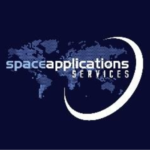Perform biomechanical simulations and analyses of countermeasure devices to mitigate bone loss in space conditions (simulate microgravity). The AnyBody Modeling System allows you to perform analyses of countermeasure devices or general tasks in microgravity and evaluate parameters as individual muscle activations and joint reaction forces.
Examples:
- Tibia strain simulation during 1g and 0g conditions during a treadmill walking cycle
- Muscle activity analysis during countermeasure exercise activities
- Studying training schemes for lunar missions
- Biomechanical simulations of exercise devices in space conditions (simulate microgravity)
- Evaluation of parameters as reaction forces, joint angles, joint moments, joint power, and muscle recruitment in space conditions (simulate microgravity)
“Space Applications Services and AnyBody Technology participated together in several successful projects aiming at developing the next generations of astronauts’ health and sports equipment.
The AnyBody Technology framework supported the improvement of the training protocols and the evaluation of the efficiency of our newly developed devices by simulating lower-limbs resistive exercises (SOLEUS project).
The musculoskeletal simulations allowed Space Applications Services to reinforce further the safety of our sport exercisers before the first clinical tests campaigns and to progress faster on optimizing the design of our products.” Space Applications Services NV/SA
Contact us to learn more or to discuss how we could solve your problem
Selected papers
- Sjöberg M (2020), “Biomechanical analyses of flywheel resistance exercise: From a space- and ground-based perspective“, Ph.D. Thesis, KTH, Sweden, School of Engineering Sciences in Chemistry, Biotechnology and Health (CBH). [WWW]
- Letier P, Fau G, Mittag U, Zange J, Rittweger J, Jung M, McIntyre J, Runge A (2017), “SOLEUS: Ankle Foot Orthosis for Space Countermeasure with Immersive Virtual Reality“, Book Chapter, In: Wearable Robotics: Challenges and Trends, pp. 305-309. [DOI, WWW]
- Boije M, Jönsson M (2015), “Biomechanical simulations of a flywheel exercise device in microgravity“, Thesis, Karolinska Institutet, Sweden. [PDF, WWW]
- Lindenroth L, Caplan N, Debuse D, Salomoni SE, Evetts S, Weber T (2015), “A novel approach to activate deep spinal muscles in space—Results of a biomechanical model“, Acta Astronaut., vol. 116, pp. 202-210. [DOI, WWW]
- Zhang J, Zhou R, Li J, Ding L, Wang L (2013), “Optimization for Lunar Mission Training Scheme Based on AnyBody Software“, In: Digital Human Modeling and Applications in Health, Safety, Ergonomics, and Risk Management. Human Body Modeling and Ergonomics, pp. 169-178. [DOI, WWW]
- Fritz NM (2008), “Musculoskeletal Model, Countermeasure and Bone Analysis for Astronauts“, ANSYS Conference & 26th. CADFEM Users’ Meeting. [PDF]
- See more aerospace related publications
